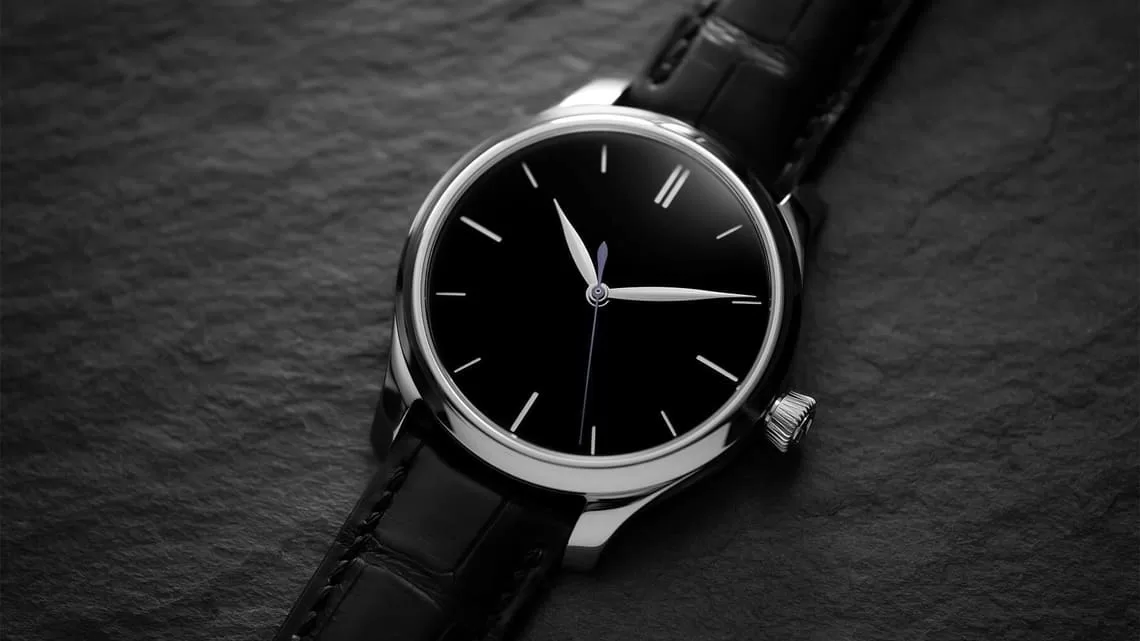There’s a tiny measure of humour and philosophy in the answer Nicholas Hofmann gives when asked about what he considers true luxury. “Luxury for me is time. You can’t control it,” says the international sales director of H. Moser & Cie, a luxury Swiss watch brand founded by Heinrich Moser in 1828. Hofmann, who was recently in Bengaluru, joined the company in 2010, two years before it was acquired by the MELB Holding Group of the Meylan Family, Switzerland. Over the years, he’s closely seen the watch brand bridge the gap “between traditional horology and an edgy, twisty, young identity.”
In its almost 200 years of existence, H. Moser & Cie has seen many changes. A watchmaker of choice for aristocrats in Russia, Moser returned home to Schaffhausen in Switzerland to set up the eponymous watch brand and factory in 1828. In the 20th century, the quartz crisis of the late 1970s and early 1980s brought the curtains down on Moser & Cie’s first act. Then in 2002, a call from Dr. Jürgen R. Lange, the founder of Precision Engineering to Roger Nicholas Balsiger, Heinrich Moser’s great grandson and the company’s honorary chairperson, ushered in the brand’s second act.
Also read: Falguni and Shane Peacock bring Renaissance art to Indian couture
Relaunched in 2005, the brand today is counted among the most sophisticated and technologically advanced watches. Priced between Rs14,34,000 to ₹2,77,20,000, they have also become collectors’ items. In an interview with Mint Lounge, Hofmann talks the brand’s legacy, the minimalist dials that have become the brand’s signature, and India plans. Edited excerpts:
How has the brand evolved over the years, especially after 2002?When we started out, we knew that we had the heritage of the Moser family, the production capacity and the know-how. The main questions playing out in our heads were: How do we market it? How do we make it stand out from all these other amazing brands who also have production capability and heritage? We realised we needed to do it by being disruptive. We achieved that by having colourful dials and removing our logo and the Swiss-made tag from the dials. The decisions helped us bridge the gap between traditional horology and an edgy, twisty, young identity where you have fun while you’re talking about watches.
You’ve opened new flagship stores in Hong Kong and Shanghai. What plans do you have for India?
We decided to open the stores in these cities because we felt that if we want to grow these markets, we need a strong presence there. For India, the logical development is to shift from generic showcases to more Moser presence and having a partner like Ethos Watch Boutiques. So, yes, there are discussions happening about how we can strengthen our presence and increase brand visibility.
Also read: LVMH will sponsor 2024 Olympics in Paris
The dials of Moser & Cie embody ‘quiet luxury’ in the strict sense of the term. Why such extreme focus on minimalist design?
It started with a collection of Concept watches we’d made that had fumé dials (fumé dials have a gradient texture). A vintage Moser design from the 1960s, we’d brought it back into the spotlight in 2015. When the collection was in the works, we wondered how we could get people to talk about the dial. The answer was to ‘remove everything’, so you only talk about the dial. Most concept watches in the market tend to be crazy and elaborate with complications. Our fumé watches were the opposite. I remember how they caused polarising reactions initially.
A lot of people said, “This doesn’t look like a watch. It looks strange.” We’d made only 10 pieces at the time. Eventually, we made 20 and then, the popularity just grew. If you see our watches today, most of them don’t sport a logo on the dials. And those that do, have transparent ones. Our aim is to put the focus on the watch’s design but it has also become a signifier of what you call “quiet luxury”.
Do your custom watches have a resale market?
I think all our watches have a resale market. I think it’s partly due to our limited production capacity. We produce 2,000 watches annually, but at the same time, the demand for them has exploded. It has led to a situation where our clients have the option of waiting for a long time or buying our watches in the secondary market at a premium price. We have models that sell for double the price in the resale market, some of them command between 25% and 50% above retail price.
At a recent auction, a Streamliner Tourbillon was auctioned for about
₹7.15 crore. It’s encouraging for a lot of clients but that is not what we want to promote. The watch’s resale value shouldn’t be the reason why you want to buy a Moser & Cie.
Who is a Moser & Cie customer: a watch collector or a connoisseur of luxury?
Our customers are a bit of both. We’ve got the watch collectors who are the early adopters and understand the mechanics behind it. What has changed drastically in the last few years is that we are seeing more younger clients who want to buy their first mechanical watch. It’s surreal and flattering for us because when we ask them why they want one, they say it’s because they want something authentic, which has a soul.
Also read: Why a pair of jeans is getting a couture makeover





